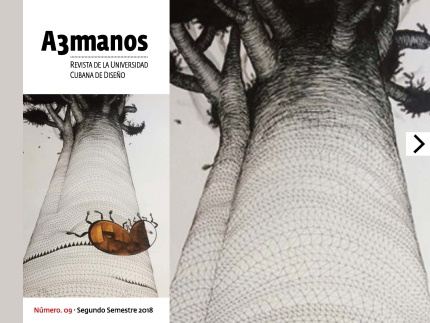Reflections on mechanical design in the 21st century.
##plugins.themes.bootstrap3.article.main##
Abstract
The work presents some reflections on the three main properties of design declared by classical schools at the international level, such as ideology, concept and aesthetics seen with an integrating approach without there being any distinction between the generic concept of a purely work artistic or cutting engineering. The work also addresses the main international trends that support the existence of a new theory of mechanical design that would allow to consider new paradigms for this branch of knowledge and that are appreciated under a more comprehensive and comprehensive vision, as opposed to already schematic canons and that they deserve to be revolutionized nowadaysconfronting a narrow scope of the design. The incursion of advanced technologies in the design during the production of equipment, machines and objects, all identified as products that are developed in the XXI century are evidence of a growing development of science, technology and innovation in this branch of knowledge. The present work is based on a descriptive investigation of this phenomenon, where for its development experts are used in the subject that together with an adequate bibliographic review and the author's experience validates the foundations that sustain these reflections.
##plugins.themes.bootstrap3.article.details##

This work is licensed under a Creative Commons Attribution-NonCommercial-ShareAlike 4.0 International License.
- Attribution — You must give appropriate credit , provide a link to the license, and indicate if changes were made . You may do so in any reasonable manner, but not in any way that suggests the licensor endorses you or your use.
- NonCommercial — You may not use the material for commercial purposes .
- No additional restrictions — You may not apply legal terms or technological measures that legally restrict others from doing anything the license permits.
- ShareAlike — If you remix, transform, or build upon the material, you must distribute your contribution under the same license as the original. NOTE: This point applies to numbers 1 to 20 of the magazine with the previous CC-BY-NC-SA 4.0 license. Does not apply to the new CC BY-NC 4.0 license from Volume 11, Number. 21 (2024).
References
Amat Joachin, C. y Pérez Oropesa, J. (2015). Pro- ceso del diseño en la ingeniería. Universidad autónoma de Puebla. Facultad de ciencias de la electrónica. México.
Arana, M. Valdés, R (1998). La Tecnología apropia- da: concepción para una cultura. En Tecnología y Sociedad. Editora "Félix Varela", Cuba. (p. 19-30)
Betancourt Herrera, J, L, (2016). Nuevas tecnolo- gías para el diseño. Conferencia para la maestría gestión del diseño, Nuevas tecnologías para el di- seño, ISDI, La Habana. Cuba
Cross, N, (1999). Métodos de diseño. México, Li- musa, 1999, ISBN 968-18-5302-4
Cubillas, R. A, (2017). Diseño de entornos colabo- rativos a través de herramientas TICs. ARKA. Re- vista de Arquitectura NO.3 54-61.
Esparza Ramírez, Juan, (2012). Factores que influ- yen en la innovación del producto del diseño (te- sis de Maestría). Universidad Autónoma de Nuevo León. México
Fernández, Lucila y otros (2016). Modernidad, identidad y valor social: El diseño en Cuba de 1960 2000.publicacion ISDI. La Habana. Cuba.
Ferrer Gómez, C (2010). Aplicaciones de la Biónica en proyectos de diseño mecánico proyecto de curso. Universidad EACIT, Medellín, Colombia.
Rivera Pedraza, J.C y Hernández Ortuño, B (2014). Importancia del análisis del sistema exterior en el modelo de diseño concurrente para el desarrollo de un producto sostenible. Universidad Politécnica de Valencia. España
Rodríguez- Aragón, L. J (2012). Software: sistemas operativos y Aplicaciones de Informática, estadís- tica y Telemática. Universidad Rey Juan Carlos, Madrid. España.
Rodríguez M, G, (1995). Manual de diseño indus- trial. México, Gustavo Gili. ISBN 968-887-027-7
Salinas Flores, O, (1992). Historia del diseño indus- trial. México, Trillas.
Segrera, A (1999). La visión de la simplificación de la naturaleza en el diseño. En: Ánfora, Vol.17, no.14 (julio 1999 a enero 2000) Colombia.
Torrent, Rosalía, M y, Joan M. (2005). Historia del diseño industrial. Madrid, Cátedra Diseño. Uni- versidad complutense de Madrid. España.
Zaldivar Salazar; M (2019). Monografía, Relaciones sinérgicas del mantenimiento y la fiabilidad de las máquinas. ISDI-UH. La Habana. Cuba






















